News
U.S. Military Service Is the Strongest Predictor of Carrying Out Extremist Violence

The mass murder in New Orleans and Cybertruck explosion in Las Vegas fit a troubling pattern among U.S. vets, research says.
The two men who carried out apparent terror attacks on New Year’s Day — killing 15 people by plowing a pickup truck into a crowd of New Year’s revelers in New Orleans, and detonating a Tesla Cybertruck outside a Trump hotel in Las Vegas — both had U.S. military backgrounds, according to the Pentagon.
From 1990 to 2010, about seven persons per year with U.S. military backgrounds committed extremist crimes. Since 2011, that number has jumped to almost 45 per year, according to data from a new, unreleased report shared with The Intercept by Michael Jensen, the research director at the National Consortium for the Study of Terrorism and Responses to Terrorism, or START, at the University of Maryland.
Military service is also the single strongest individual predictor of becoming a “mass casualty offender,” far outpacing mental health issues, according to a separate study of extremist mass casualty violence by the researchers.
From 1990 through 2023, 730 individuals with U.S. military backgrounds committed criminal acts that were motivated by their political, economic, social, or religious goals, according to data from the new START report. From 1990 to 2022, successful violent plots that included perpetrators with a connection to the U.S. military resulted in 314 deaths and 1,978 injuries — a significant number of which came from the 1995 bombing of the Murrah Federal Building in Oklahoma City.
In the latest attacks, the FBI identified 42-year-old Shamsud-Din Jabbar as the man who rammed a pickup into New Year’s revelers on Bourbon Street in New Orleans, early on Wednesday morning. At least 15 people were killed and 35 more were injured.
The U.S. Army said Jabbar served as a human resource specialist and an information technology specialist between 2007 and 2020. His service included a deployment to Afghanistan from February 2009 to January 2010. A staff sergeant at the end of his service, Jabbar was “inspired by” the Islamic State terrorist organization, according to a short address by President Joe Biden on Wednesday night, who added that, in videos posted to social media shortly before the attack, Jabbar indicated that he had a “desire to kill.” The FBI said it did not believe he was solely responsible for the attack and said the investigation was “live.”
Authorities are also investigating whether the terrorist attack in New Orleans is linked to the Cybertruck explosion in Las Vegas which killed the attacker, Matthew Livelsberger, and wounded seven bystanders. The U.S. Army told The Intercept that Master Sgt. Matthew Alan Livelsberger served in the active-duty Army from January 2006 to March 2011, then served in the National Guard from March 2011 to July 2012, followed by a stint in the Army Reserve from July 2012 to December 2012. That same month, he rejoined the Army, serving as a U.S. Army Special Operations Soldier.
Livelsberger was assigned to U.S. Army Special Operations Command and still serving in the military, though on approved leave, at the time of his death.
In the years 1990 to 2022, 170 individuals with U.S. military backgrounds plotted 144 individual mass casualty terrorist attacks in the United States, according to START research using the Profiles of Individual Radicalization in the United States, or PIRUS, database, which includes information on more than 3,000 subjects who committed extremist crimes in America. These troops and veterans represent approximately one-quarter of all individuals who plotted mass casualty extremist attacks during this span, outstripping their representation in the U.S. population.
Jensen and his colleagues found that while military personnel and veterans are not more likely to radicalize to the point of violence than members of the general public, when service members and veterans do become radicalized, “they may be more likely to plan for, or commit, mass casualty crimes, thus having an outsized impact on public safety.”
The researchers also determined that subjects “in PIRUS with U.S. military backgrounds are 2.41 times more likely to be classified as mass casualty offenders than individuals who did not serve in the armed forces.” This means that U.S. military service is a more reliable predictor for becoming a mass casualty offender than mental health issues, being a lone offender, or having a pre-radicalization criminal history.
Most mass casualty offenders with U.S. military backgrounds in PIRUS (73.5 percent) were associated with far-right domestic extremist groups and movements. Approximately 15 percent (24 offenders) were inspired by or connected to foreign Islamist extremist groups, such as Al Qaeda and its affiliates (9 subjects) or the Islamic State or ISIS (13 subjects).
Law enforcement sources confirmed to local news outlets that Livelsberger’s weaponized Tesla Cybertruck was rented from Turo, the vehicle-sharing service that was also used in the New Orleans attack. Jabbar reportedly used the Turo app as well to rent the electric Ford pickup truck used in that attack.
Both Livelsberger and Jabbar spent time at the military base formerly known as Fort Bragg and now called Fort Liberty, a massive Army garrison in North Carolina that is home to multiple Army Special Operations units. It does not, however, appear that their assignments to the base overlapped.
Fort Liberty is, however, an exceptionally troubled Army base. Investigations found, for example, that 109 soldiers assigned there died in 2020 and 2021. Ninety-six percent of those deaths took place stateside. Fewer than 20 were from natural causes. The remaining soldier fatalities, including macabre or unexplained deaths, homicides, and dozens of drug overdoses, were preventable.
Seventy-six of the 170 mass casualty offenders (44.7 percent) in PIRUS with military backgrounds served in the Army. These soldiers and veterans represent more than half (52.4 percent) of all Army-affiliated individuals represented in the data, which is the highest ratio of mass casualty to non-mass casualty offenders for any one military service branch. By comparison, 32 percent of the individuals represented in the data who served in the Marine Corps were mass casualty offenders.
“The Army is a vast organization with all kinds of different people and all kinds of different training and experiences,” said Joel A. Dvoskin, a clinical and forensic psychologist and an expert on violence, who cautioned against drawing any early conclusions about the relationship between the attacks and the attackers’ military service records. He said data on the relationship between military service and mass casualty attacks should only be used for beneficial purposes, like smoothing the transition from military to civilian life.

News
“I think yes”: Biden believes he would have won election over Trump had he stayed in the race
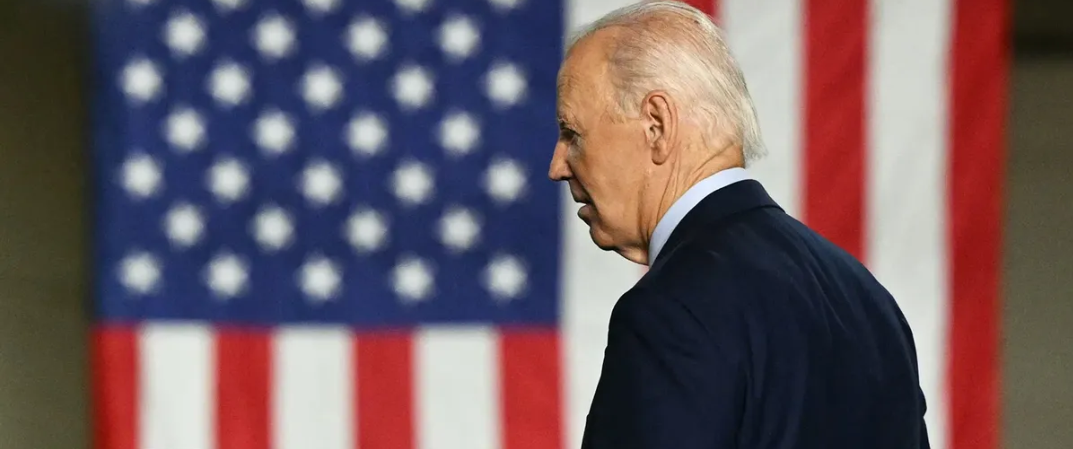
When asked if his health would have held up to four more years of the presidency, Biden said “Who the hell knows?”
President Joe Biden thinks he had the juice.
The outgoing president speculated that he would have beaten President-elect Donald Trump a second time had he stayed in the presidential race in 2024. In a wide-ranging interview with USA Today, Biden was adamant that he would have fared better than Vice President Kamala Harris but balked on whether he could have served for four more years.
“It’s presumptuous to say that, but I think yes,” Biden told the outlet when asked if he would have won in November. “When Trump was running again for reelection, I really thought I had the best chance of beating him.”
Biden was less confident about making it through a second term. He said he considered “pass[ing] the baton” because he “wasn’t looking to be president when I was 85 years old, 86 years old.”
“Who the hell knows?” Biden said when questioned directly about whether he would have held his hypothetical presidency through 2028.
Elsewhere in the interview, Biden speculated about how his presidency would be remembered and advocated for what he viewed as the strengths of his administration.
“I hope that history says that I came in and I had a plan how to restore the economy and reestablish America’s leadership in the world,” Biden said. “That was my hope. I mean, you know, who knows? And I hope it records that I did it with honesty and integrity, that I said what was on my mind.”
News
BREAKING: Mexican President Claudia Sheinbaum Claps Back After Trump Suggests Renaming Gulf of Mexico to “Gulf of America” with Bold Renaming Proposal of Her Own!
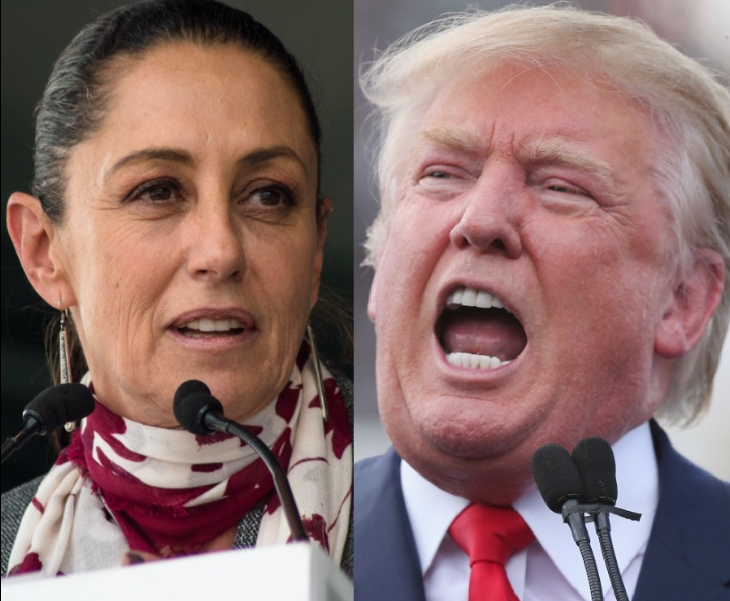
Mexican President Claudia Sheinbaum hits back hard after Donald Trump absurdly suggests renaming the Gulf of Mexico to the “Gulf of America” by suggesting some renaming of her own.
This is how you handle a man-child like Trump…
“I mean obviously, ‘Gulf of Mexico,’ the name is recognized by the United Nations, an organism of the United Nations. But next, why don’t we call it ‘Mexican America?’ It sounds nice, doesn’t it?” Sheinbaum said at a press conference.
She then waved at a map showing that North America was historically referred to as “Mexican America” before the rise of the United States.
“Since 1607 The Constitution of Apatzingán was for Mexican America, so we’re going to call it ‘Mexican America,’ it sounds nice, doesn’t it?” she went on. “And Gulf of Mexico, well, since 1607 and it’s also recognized internationally.”
Brian Winter, vice president of the Council of the Americas, praised Sheinbaum’s remarks—
“Humor can be a good tactic, it projects strength, which is what Trump responds to. It was probably the right choice on this issue,” he said.
“Although President Sheinbaum knows it won’t work on everything — Trump and his administration will demand serious engagement from Mexico on the big issues of immigration, drugs and trade,” Winter added.
Incidents like this reaffirm what a huge mistake the United States made be reelecting Trump. We are transitioning from stable, sane governance to the egomaniacal ravings of a reality TV star.
The world is laughing at us.
News
Trump’s trolling and tariffs sped up Trudeau’s demise. How will Canada handle him now?
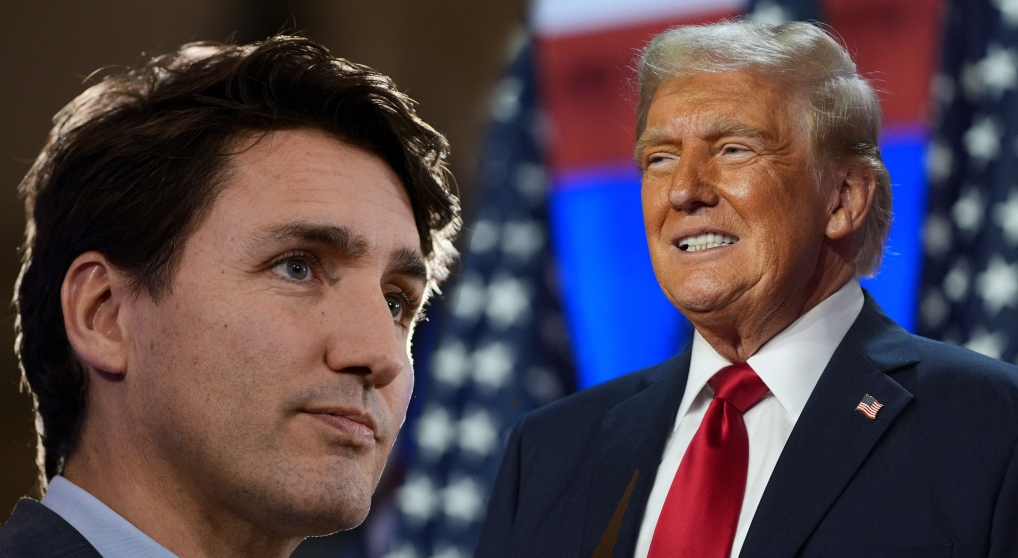
Liberal Party infighting over Trudeau’s handling of the president-elect and his threat of tariffs dealt a final blow to the prime minister’s premiership. What now?
Canadians woke up Tuesday to an uncertain future, after Prime Minister Justin Trudeau said he would resign and bring his near-decade in power to an end.
Trudeau’s announcement came just days into an election year and followed weeks of mounting pressure from within his own party to step down as he battled dire poll ratings partly driven by soaring inflation, rising immigration and his handling of President-elect Donald Trump.
“If I’m having to fight internal battles, I cannot be the best option” in Canada’s next election, Trudeau, 53, told reporters in Ottawa.
His decision has triggered an urgent search within the Liberal Party to identify a new candidate who can take on Conservative leader Pierre Poilievre. Poilievre has dominated in the polls and was last on 44% according to the Canadian Broadcasting Corporation, compared with Trudeau — whose rating sits just above 20%.
The Trump factor
A key focus for whoever leads Canada next will be managing their country’s relationship with the incoming Trump administration.
After winning re-election in November, the president-elect vowed to impose a 25% tariff on all products imported from Canada and Mexico.
While Trudeau sought to appease Trump, visiting him at his Mar-a-Lago estate in Florida, the incoming president has since repeatedly jabbed at the prime minister, suggesting making Canada the 51st state and reiterating the idea in response to Trudeau’s resignation.
Trudeau’s handling of Trump precipitated the final blow to his tenure, with the high-profile departure last month of his Deputy Prime Minister and Finance Minister Chrystia Freeland. In a scathing resignation letter, she accused Trudeau of failing to take seriously Trump’s threats to increase import tariffs on Canadian goods.
Freeland warned that Canada needed to take Trump’s plans “extremely seriously” and avoid “costly political gimmicks.”
In contrast to Trudeau, Poilievre — the former-Conservative minister’s biography touts him as a “life-long conservative” and “champion of a free market” — has sought to present himself as the candidate with the “strength and smarts to stand up for this country.”
In an interview with Canadian broadcaster CTV News last month, Poilievre said that his first message for the incoming president was “that first and foremost, Canada will never be the 51st state of the U.S.” — and Canada, he said, had a “very proud future ahead of us.”
Tari Ajadi, a politics professor at McGill University in Montreal, was less sure. He told NBC News that Poilievre has yet to produce a clear plan on how to tackle the Canada-U.S. relationship under Trump, adding that “I think Canada’s in for a rough ride.”
What happens now?
Even though Trudeau is quitting, Canadians will have to wait for months before they can head to the polls.
An election date has yet to be announced, and while the Canada Elections Act says it must be held on or before Oct. 20, Trudeau’s resignation means it’s likely that a vote will be called before then.
Before that can happen, the Liberal Party must find a candidate. Trudeau said he would remain at the party’s helm until his party colleagues have undertaken a “robust, nationwide, competitive process” to find his successor.
In the meantime, Trudeau said Canada’s governor general had accepted his request to prorogue Parliament, suspending proceedings without the dissolution of parliament, until March 24. Then, a confidence vote is expected to be held, with a no-confidence result triggering the next federal election.
That means the Liberal government will remain in power, but parliamentary activity will come to a halt.
Referring to his party’s lack of working majority and Canada’s legislative gridlock, Trudeau said Monday that “Parliament has been paralyzed for months after what has been the longest session of a minority Parliament in Canadian history.”
Who will replace Trudeau?
Trudeau, a former teacher who campaigned with the slogan “sunny ways,” took office in November 2015 and enjoyed high popularity ratings early in his leadership with the promise of liberal reforms, progressive tax policies and a focus on gender equality.
His initial appeal was also boosted by the legacy of his father, the charismatic but polarizing Pierre Trudeau, who was one of Canada’s longest-serving leaders.
But in recent years, Trudeau’s approval ratings plummeted from around 65% in September 2016 to around 22% in December, according to the nonprofit Angus Reid Institute.
According to figures from the Angus Reid Institute, Freeland, a former journalist, is the Liberal candidate most likely to beat Poilievre.
Former Bank of Canada governor Mark Carney is also a contender, and the Conservatives have sensed that. They have long attacked Carney, with Poilievre dismissing him as “just like Justin.”
But regardless of who Trudeau’s successor is, “it’s hard to imagine anyone coming in who can hold on to the government in the next election,” Cornell University government professor Peter Loewen.
-

 Uncategorized3 weeks ago
Uncategorized3 weeks agoBREAKING: Kylie Kelce hits back hard after MAGA trolls swarm her with hatred for daring to dethrone Joe Rogan as the #1 podcaster in America.
-
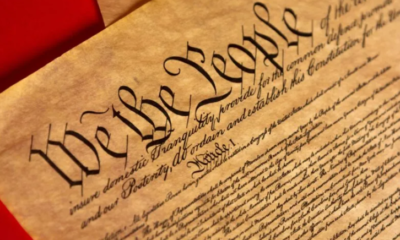
 News2 weeks ago
News2 weeks agoConstitutional Law expert: Trump will be an “illegitimate” President given he’s barred from office by 14th Amendment
-
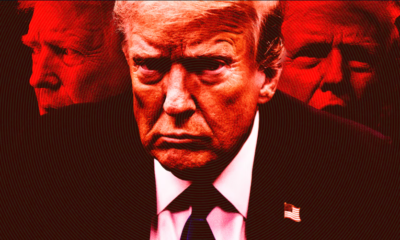
 News2 weeks ago
News2 weeks agoTrump Blames ‘Deranged’ Enemies for Hush Money Case in Posts
-
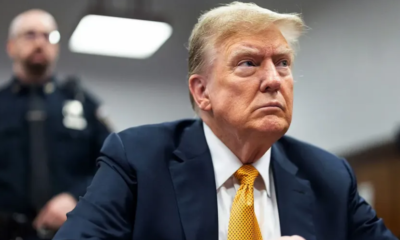
 News3 weeks ago
News3 weeks agoMerchan: Trump will be sentenced
-
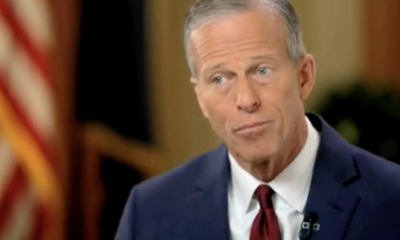
 News2 weeks ago
News2 weeks ago‘Is It Realistic?’: Top Republican Casts Doubt on Trump’s Deportation Quest
-
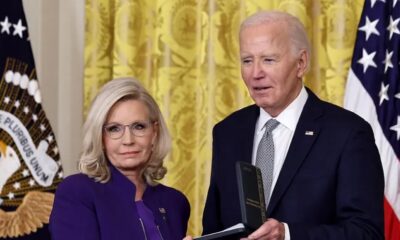
 News3 weeks ago
News3 weeks agoMAGA “offended” at Liz Cheney award
-
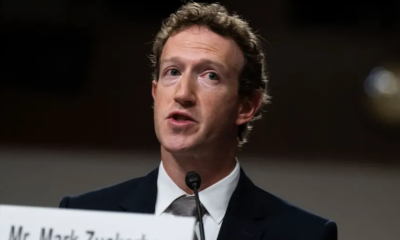
 News2 weeks ago
News2 weeks agoMark Zuckerberg tells Fox News that Meta will “get rid of fact checkers” in latest appeal to Trump
-
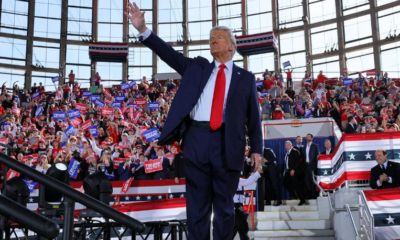
 News2 weeks ago
News2 weeks agoFailing to tell the central story’: Reporter reveals what media misses in Trump coverage





